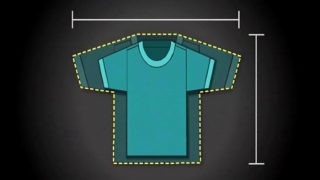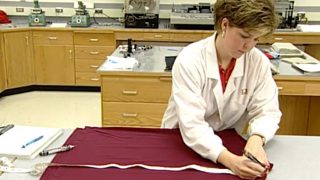Understanding & Overcoming Shrinkage
Fabric Defects: Shrinkage
One of the most important aspects of an apparel item or home product is its dimensional stability to laundering. There may be no worse attribute than a shirt, slack, or sheet that shrinks or grows and no longer fits properly. Controlling shrinkage of textile and apparel products impacts the design and production planning in manufacturing or sourcing products and must be addressed in the supply chain.
Understanding & Overcoming Shrinkage
Learn how you can overcome shrinkage issues within the supply chain and grow your cotton business.
Don Bailey, Textile Technology Instructor, covers design, construction, dyeing, and finishing parameters that affect or improve shrinkage and what you need to know when sourcing cotton products. This webinar covers the impact of fabric density (cover factor), fabric type, wet processing techniques, chemistry, physical finishing, and compaction. It also takes a closer look at the impact of heat on cotton relaxation and the effects on productions costs were discussed.
One of the most important aspects of an apparel item or home product is its dimensional stability to laundering. There may be no worse an attribute than a shirt, slack, or sheet that shrinks or grows and no longer fits properly. Controlling shrinkage of textile and apparel products impacts the design and production planning in manufacturing or sourcing products and must be addressed in the supply chain.
Technical Bulletin: “Guide to Improved Shrinkage Performance of Cotton Fabrics”
To be competitive, apparel companies need to ensure that shrinkage is low and is consistent from garment to garment. However, rigid and arbitrary fabric shrinkage specifications are not the answer. Instead, apparel firms and mills need to work as partners, to ensure that cotton apparel products are planned and engineered in such a way as to control shrinkage while meeting other requirements and expectations.
In this bulletin, we explore in detail the types and causes of shrinkage in cotton fabrics and describe methods for reducing shrinkage. The key to success is to engineer the product from fiber selection through all processing steps, setting reasonable specifications based on construction parameters and taking into account how shrinkage is affected by fiber, yarn size and type, construction variables, wet-processing procedures, finishing procedures, apparel manufacturing processes, and garment care labeling and laundering practices.
Technical Bulletin: “Wet Processing of 100% Cotton Knitted Fabric”
It is well established that knitted fabrics of all constructions and fiber blends are inherently more prone to shrinkage as compared to wovens. Because of the inability of a knitter to form a knitted fabric with no shrinkage, it is important for the dyer and finisher to make an effort to remove as much shrinkage from the product as possible. However, the ease with which a cotton knitted fabric is distorted during processing makes it especially difficult to deliver fabrics with no shrinkage. This bulletin will discuss in some detail the aspects of knitted fabric construction and wet processing and how they are related in terms of shrinkage.
The factors that influence the level of dimensional stability can be summarized as follows:
- Knitting parameters
- Processing tensions after knitting
- Relaxation techniques in finishing
- Mechanical and chemical finishes
Each of these areas can be broken down into fundamental aspects.


